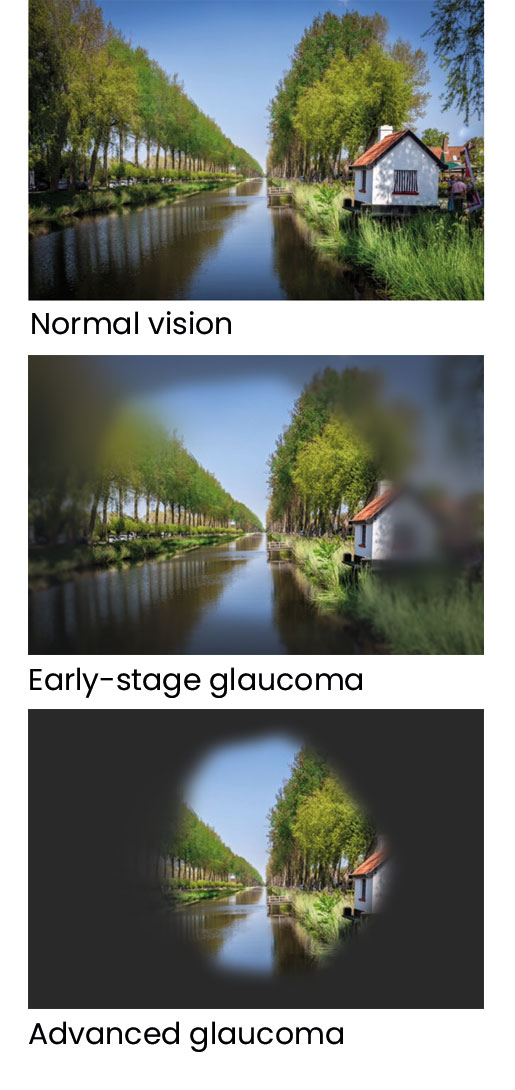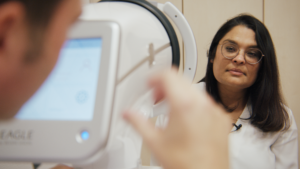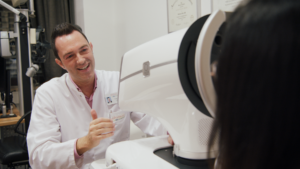Elevated ocular pressure and glaucoma
What is glaucoma?

Symptoms of glaucoma
Chronic glaucoma
- Your field of vision gradually reduces.
- At a more advanced stage, your visual acuity also decreases.
- Blind spots will emerge in your field of vision, often without you even realising it.
Acute glaucoma
- Your eyes become painful, red and dull.
- Your vision becomes blurred.
- You get headaches, dizziness and nausea.

Treatment of glaucoma
It is important to have your eye pressure measured regularly by your eye doctor, and to have a check-up of your optical nerve, in order to detect glaucoma early. In the event of symptoms of glaucoma, it is important to take quick action since occurred damage to the nerve cells cannot be repaired. The emphasis of glaucoma treatment is on lowering the eye pressure. This can be done with a laser treatment, eye drops or, in exceptional cases, an eye operation.
The treatment of glaucoma is aimed at keeping the eye pressure low permanently. Glaucoma is unfortunately incurable and damage that has already been caused cannot be repaired. That is why it is important for glaucoma to be diagnosed early, so that it can be treated appropriately. Regular check-ups are therefore important.
What treatments do we offer?
- UNIQUE IN BELGIUM – direct Selective Laser Trabuloplasty (dSLT)
We are the first in Belgium to be able to offer our patients the Belkin ‘no-touch’ laser treatment for glaucoma. This brand-new treatment is now prescribed by the glaucoma association as the preferred treatment, even ahead of the use of drops.
In this painless laser treatment, the ophtalmologist does not have to touch your eyes (‘no touch’) at all.
With this laser, short pulses are used to widen your tear drainage system. This way, the fluid in your eye can drain away better and your eye pressure will decrease. This laser treatment is painless and usually has to be repeated after 3 to 5 years.
- Eye drops
- Microstent
- Glaucoma operation (trabeculectomy)
In this procedure, carried out under local anaesthesia with drops, a small opening is made in the white part of the eye, so that fluid can drain away. This will reduce eye pressure considerably.
How much does glaucoma treatment cost?
The cost of this treatment varies and depends on the approach selected and the seriousness of the glaucoma. During the consultation, we will explain the costs of your specific treatment. This treatment is covered by medical insurance.





